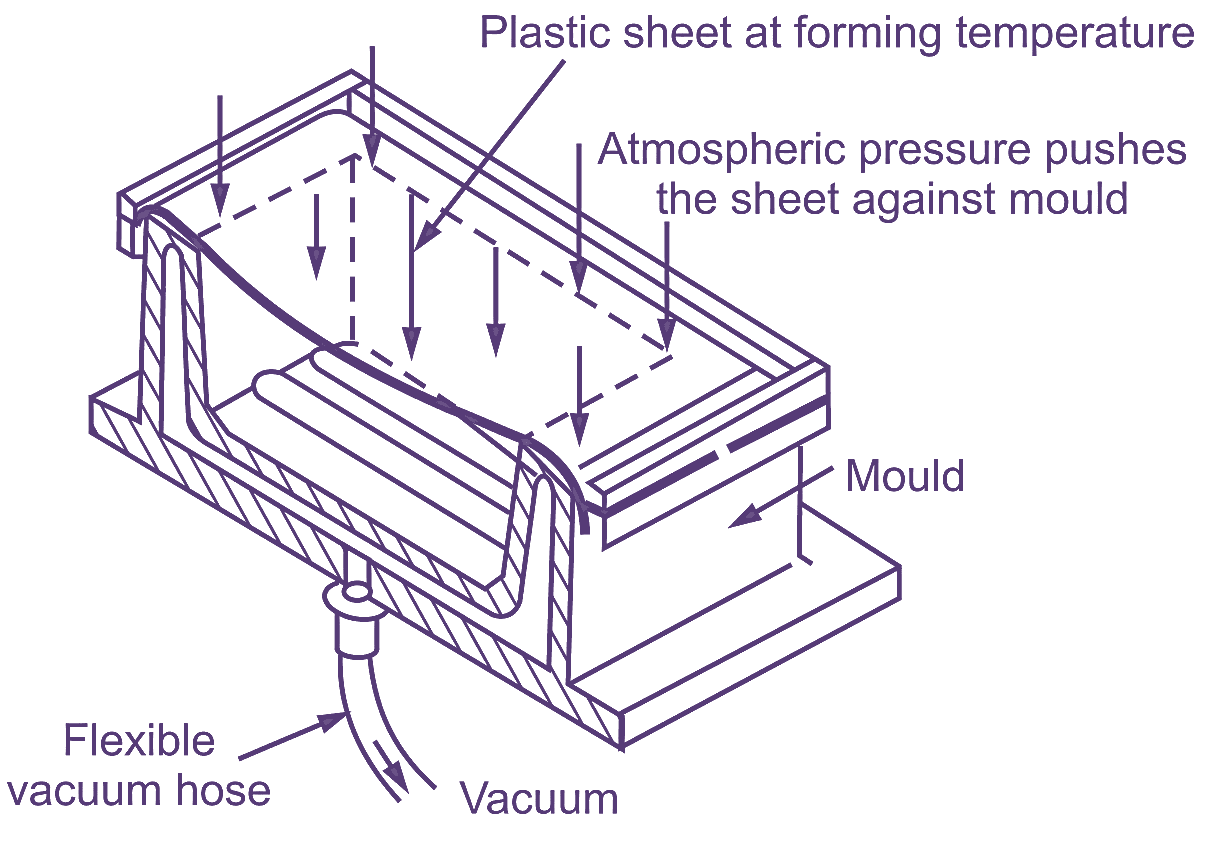
Fig. 1: Vacuum forming.
Vacuum forming is also known as Thermoforming. Vacuum forming consists of heating a thermoplastic sheet (0.125 mm to 3.2 mm) to its processing temperature (55°C to 90°C) and forcing it against the counters of the mould. The material is moved pneumatically with difference in pressure created by vacuum. Following figure 1 shows the typical vacuum forming setup.
The mould is closed with hot plastic sheet, creating a mechanical seal between the mould and the sheet. A vacuum is then used to rapidly remove the air between them. Thus, atmospheric pressure forces the hot sheet into the mould and hold it there until it cools and hardens. The sheet can be wrapped over male or female mould as shown in Fig. 2.

Fig. 2: Use of male mould in vacuum forming.
High continuous vacuum after the part has been formed ensures faster cooling, better dimensional tolerances and sharp detail. Male moulds are cheaper to make as compared to female moulds. All thermoplastic materials have a shrinkage factor. The various types of sheet shrink from 0.25

Fig. 3: Use of female mould in vacuum forming
Advantages of Vacuum Forming
- Low cost for machining and tooling.
- Low internal stresses and good physical properties in finished parts.
- The capacity of forming light, thin and strong parts for packing and other use.
Disadvantages of Vacuum Forming
- Higher cost of using sheet or film instead of plastic pellets.
- The necessity of trimming the finished parts.
Applications of Vacuum Forming
A wide variety of products may be made from thin sheet plastic using thermoforming. These products include small jelly containers used in restaurants, refrigerator inner part, containers for packing etc.
Products of Vacuum Forming
- Packaging for cosmetics, chocolates, and biscuits.
- Yogurt container.
- Disposable cups.